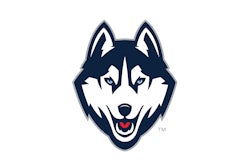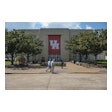Copyright 2018 Gannett Company, Inc.
All Rights Reserved
USA TODAY
Sitting on his couch last year after Christmas, the mayor of a Chicago suburb came up with an idea that might have seemed a little bizarre.
Craig Johnson said he had been watching "bowl game after bowl game" on television. Virtually all of those games were named after businesses that paid to have their names in the game titles. What if he tried something like that?
What if his government in Elk Grove Village paid to attach its marketing slogan — "Makers Wanted" — to the name of a bowl game? The goal would be to attract manufacturers to its industrial park next to O'Hare International Airport.
"Could you picture 'Makers Wanted Bowl' at the 50-yard line?" Johnson said he asked his wife. "She looks at me, and excuse my language. She goes, 'You're (expletive) nuts.'"
Nearly a year later, the Makers Wanted Bahamas Bowl in Nassau will feature Toledo (7-5) against Florida International (8-4) on Dec. 21 on ESPN. The title sponsorship cost his village $300,000. But Johnson estimated it already has received millions of dollars' worth of publicity from the deal, helping show how even the lowest bowl game can hold huge value — and why the bowl industry is poised to get even bigger.
In 1996-97, there were 18 bowl games. Five seasons later, there were 25. This season, there are 40 postseason games, starting Saturday, including 10 teams with the minimum record necessary to qualify at 6-6.
For 2020 and beyond, the NCAA recently approved a possible expansion to as many as 86 teams in 44 postseason games, including the national championship game. That means nearly two-thirds of all major-college football teams could earn a participation trophy in the form of a bowl berth.
That's great for business, according to the key market forces driving demand: sponsors, schools, cities, television viewers and ESPN. It doesn't even matter that average, per-game bowl attendance has declined for 10 years in a row to about 40,000, according to NCAA records, or that participating schools and conferences last year were required to pay for a record $25 million in unsold tickets. The appetite for this bowl bonanza persists, because they're all getting what they want.
Television: By far the biggest reason for the expansion and wealth of the bowl industry is The Walt Disney Company, which owns ABC and ESPN. This year, those networks will televise 35 of the 40 games, using them to drum up advertising revenue during the holiday season, when families are often at home and off work.
ESPN Events, a division of ESPN, even owns and operates 13 major bowl games, including the Bahamas Bowl. It plans to add a bowl game in Myrtle Beach, South Carolina, in 2020 and will consider adding more, said Clint Overby, vice president of events for ESPN Events.
"What does it ultimately matter if there's quote-unquote too many games?" Overby said of the perception by some that there's a glut of bowl games. "As long as there's interest and people want to play in them, and there's a perceived value, then really it's a net positive for the sport. The number of games is really not the issue."
Even the Bahamas Bowl can be considered a success for ESPN despite it being the least-watched and least-attended bowl game last year. It drew a crowd of 13,585 and an average television audience of 882,000 for Ohio's 41-6 win against Alabama-Birmingham, according to Nielsen data. Other cable channels would love to be able to show advertisers and distributors that they can get such an audience on a weekday afternoon. The same day of last year's Bahamas Bowl, a soccer game and a college basketball game on different channels drew less than half of the football game's audience, according to Nielsen data.
"ESPN looks at bowls as a highly profitable venture," former CBS Sports president Neal Pilson told USA TODAY. "They can get better ratings with a (lower-tier) bowl game than they can get with maybe just another college basketball game."
ESPN is paying an average $470 million a year for the media rights to games in the College Football Playoff rotation. The championship game alone drew an average audience last season of 28.4 million, the second-biggest in cable history. ESPN pays an additional undisclosed amount to put on its other bowl games, adding to the money gusher that flows out to the participating colleges and leagues.
The participants: Schools and their leagues earned a collective profit of $448 million from last year's bowl games, according to NCAA documents obtained by USA TODAY. That is $561 million in bowl payouts, minus $113 million in expenses associated with participating in the games, including the $25 million they lost on unsold tickets.
Most of that bowl payout money ($465 million) came from only six games: the Cotton, Peach and Fiesta bowls, plus the three games of the Playoff (Rose, Sugar and championship game). That money was shared with leagues and teams that did not participate in those games, such as those in the Bahamas Bowl. For example, $15.4 million of Conference USA's $18.6 million in bowl payout money came from those top-tier games despite it not having a team in them. Nine teams from Conference USA went to bowl games last year and racked up a combined $5.2 million in expenses, including UAB in the Bahamas, according to NCAA documents. If not for that playoff money, Conference USA would have been $2 million short of covering those expenses.
"It was said very clearly: `Look, we're going to make significant money available to conferences that are not in the (biggest bowl games),' " said Wright Waters, executive director of the Football Bowl Association, which advocates for the bowl industry. "The purpose of it is to make sure your student-athletes have a good experience and that your institutions have the benefits of bowl games."
Sponsors benefit from it, too, and provide a third major revenue source for the games beside television revenue and ticket sales.
Sponsors: The Bahamas Bowl didn't have a title sponsor last year after the previous title sponsor, the Popeyes restaurant chain, didn't renew. The pricing might have been too much for some at about $450,000. It came down to $300,000, which is what Elk Grove Village agreed to pay ESPN.
Johnson, the mayor, said the village has received a return on its investment that has greatly exceeded expectations. In the first 24 hours after the deal was announced in July, the village received $3.6 million in publicity from it, according to a marketing study provided by the village.
"It's priceless," Johnson told USA TODAY. "You couldn't have afforded to buy what we got."
The sponsorship contract calls for logos featuring "Makers Wanted" at the 50-yard line, on uniform patches and other name displays. ESPN is required to use the name "Makers Wanted Bahamas Bowl" in all on-air references, besides airing commercials for the village during the game.
"Go on Google right now, and type in 'Makers Wanted,'" Johnson said. "First listings will be Elk Grove Village. That's marketing. You want somebody to (notice the bowl name) and go, 'What the heck is Makers Wanted?'"
He said the village is "extremely happy" with the deal. And this is for one of the least watched and attended bowl games — before the game is even played.
Cities, schools and coaches: Cities like hosting bowl games because they help attract tourism and gain exposure on national TV. Some even provide funding for them. This year, the city of Birmingham is paying ESPN $550,000 to help fund the ESPN-owned Birmingham Bowl, which is title-sponsored by jewelry retailer Jared. The game previously had been called the PapaJohns.com Bowl and the BBVA Compass Bowl but did not have a corporate title sponsor in recent years.
In exchange for its funding, a city spokesman said, the city gets to keep its name in the game title next to any corporate sponsor. Therefore, instead of being called the Jared Bowl, it's the Jared Birmingham Bowl on Dec. 22. It's not clear what the game would be called if the city didn't pay and if it didn't have a corporate title sponsor. But the fact that the city values this lower-tier game enough to fund it regularly reflects demand.
And it's up to the NCAA to decide how many bowl games should be allowed in response.
"We talked about it: Is it diluted? Is it too much? How can we improve the system?" said Bret Gilliland, who worked on an NCAA committee that studied the size of the bowl system as deputy commissioner of the Mountain West Conference. "But there wasn't much sentiment that we need to (shrink) this."
The NCAA consensus recently was to try to accommodate all teams with records of 6-6 or better. This year, there were more eligible teams (82) than bowl slots (78), leaving four teams unhappy and showing room for more bowl games. The NCAA based its approval of an expanded bowl system on the number of bowl-eligible teams in each of the 10 major conferences over the previous four years, plus independent schools. In some years, more teams with 5-7 records might get into bowl games, as they have in the past.
For the schools, it means national attention, fun for fans, fundraising opportunities and a reward for their players. Their coaches love bowls, too, because they come with extra practices for their teams and bonus pay from their schools. For example, bigger bowl games often mean coaching bonuses of $100,000 or more.
In the Makers Wanted Bahamas Bowl, head coach Butch Davis is due a $35,000 bonus from FIU for participating. His opponent, Toledo head coach Jason Candle, is due a $20,000 bonus for participating and can get another $30,000 if he wins the game.
Off the field, the mayor of Elk Grove Village feels like he's already won.
"We know what we've gotten is millions, if not tens of millions" in value, Johnson said. "It's mind-boggling."
Read More of Today's AB Headlines
Subscribe to Our Daily E-Newsletter
Terms and Conditions Privacy Policy































